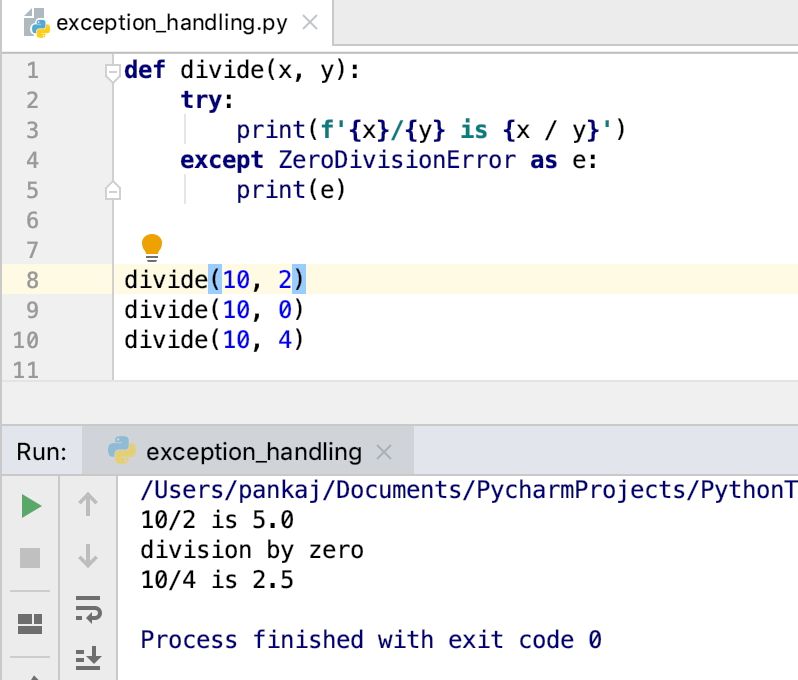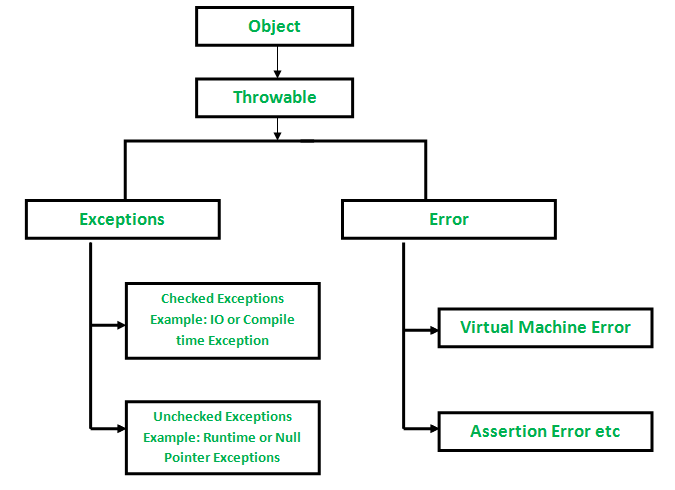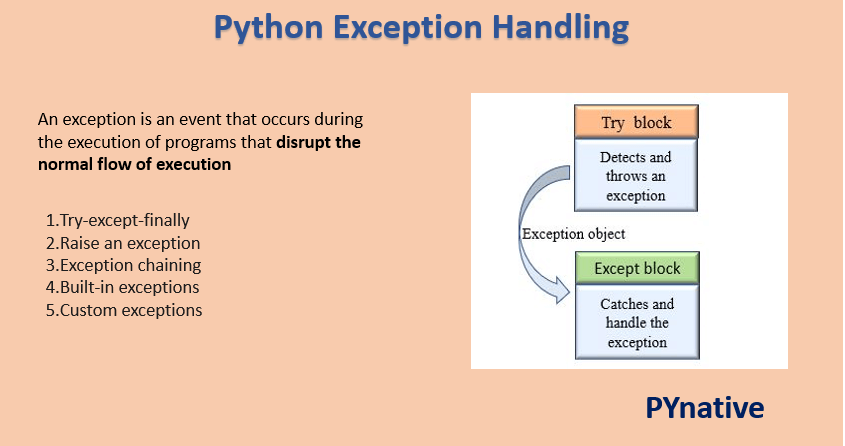Exception Handling Is Best Described as Catching Errors ___________
In the following section Ill describe some best practices regarding handling exceptions. But since they do happen we need to deal with them.

Python Exception Handling Try Except Finally Askpython
Each catch block is an exception handler and handles the type of exception indicated by its argument.

. This article describes how to handle errors and customize error handling with ASPNET Core web APIs. Handling errors or other non-happy path situations is essential when creating robust PHP applications. On the other hand is the primary method to signal and propagate evaluation errors.
We wont have to create as many custom exception classes. If a Failure terminal is connected the MQInput node propagates the message to the fail flow. Technically you can throw an exception throw an error.
We have more control over exception handling since the exceptions can be created programmatically. 1 Beware Of Pokemon Exception Handling. If you want to control or prevent roll back you can use the Catch terminal as described in Handling errors in message flows.
Exception Handling is a mechanism to handle runtime errors such as ClassNotFoundException IOException SQLException RemoteException etc. What is Exception Handling in C. Advantage of Exception Handling The core advantage of exception handling is to maintain the normal flow of the application.
Example of exception handling in JavaScript. B Exception handling allows separation of the programs logic from the error handling logic making software more reliable and maintainable. Throw a text.
J2 Written to the Infolog. The argument type ExceptionType declares the type of exception that the han-dler can handle and must be the name of a class that inherits from the Throwable 1 class. One exception type can lead to multiple different responses.
C try catch finally structure allows guaranteed clean up in event of errors under all circumstances. This is where you are able to handle the exception log it or ignore it. We use try catch throw and finally statements in JavaScript Exception handling The try statement allows you to check for errors in a block of code.
If you use throw together with try and catch you can control program flow and generate custom error messages. In this post I would like to introduce you to the set of best practices we have adopted at Moxio over the years. Catch ExceptionError info Caught ExceptionError.
After try and catch the finally statement allows. 1a only 2b only 3c only 4a and b 5a and c 6b and c 7a b and c. Exception handling attempts to gracefully handle these situations so that a program or worse an entire system does not crash.
Exception handling is an error-handling mechanism. Explains how to handle errors that do not result in an exception being thrown by Reporting Services. And that dealing is what we call exception handling.
Exception handling in C provides you with a way of handling unexpected circumstances like runtime errors. Handling Warnings and Cases That Do Not Cause Exceptions. Throw a number.
If the backout threshold is reached. Describes how to further enhance the reliability of your application with trycatch blocks. Use trycatch blocks around code that can potentially generate an exception and your code can recover from that exception.
But this kind of misuse can lead to a lot of pain when the application reached its maintenance phase. To catch the exceptions you place some section of code under exception inspection. Exceptions are bad things that werent supposed to happen.
Try A try block is used to encapsulate a region of code. The exception can be a JavaScript String a Number a Boolean or an Object. Proper exception handling takes quite some effort but will eventually result in a much more stable application.
And what about the tradeoffs. It uses DeveloperExceptionPageMiddleware to capture synchronous and asynchronous exceptions from the HTTP pipeline and to generate error. Infolog output Message 035144 pm In the try block.
This reduces tight coupling compared to the ExceptionHandler. Catch When an exception occurs the Catch block of code is executed. Catching exception is even more misused than throwing it.
Using the Detail Property to Handle Specific Errors. This exception handling best practices guide talks about when and how to notify the user about different exceptions and when to use custom exceptions. You can create custom errors with the throw statement.
If any code throws an exception within that try block the exception will be handled by the corresponding catch. A well-designed app handles exceptions and errors to prevent app crashes. Exception handling can be performed at both the software as part of the program itself and hardware levels using mechanisms built into the design of the CPU.
If you do nothing the exception causes your application to crash. So whenever an unexpected circumstance occurs the program control is transferred to special functions known as handlers. Try info In the try block.
Handling Catching Exception When To Catch Exception. Use trycatchfinally blocks to recover from errors or release resources. As such THROW and CATCH can of course also be used for building an exception handling-like error system as seen in many contemporary mainstream languages because those exception handling systems are one instance of non-local control flow.
When something goes wrong an exception is thrown. The Developer Exception Page shows detailed stack traces for server errors. Explains how to programmatically handle.
You must handle the error on the fail flow that is connected to the Failure terminal. Throw Globalerror Written to the Infolog. The exception is caught.
This section describes best practices for handling and creating exceptions. One type multiple status codes.

Exception Handling In Java Exception Hierarchy And Catching Exceptions Dataflair


No comments for "Exception Handling Is Best Described as Catching Errors ___________"
Post a Comment